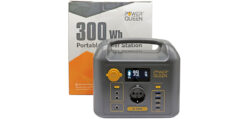
Power Queen Powerstation Layout, design and features …
Here you can see the small Power Queen P300W power station or power bank, with all the connections on the front. At the top left, under a protective cap, you can see the car connection with 12V and max. 10A, below it is a button for switching on the power station and two DC5521 sockets for charging the notebook, at the bottom left a DC5521 socket has been integrated for charging the power station via an optionally available solar panel or the supplied plug-in power supply or via the supplied car charging cable. In the middle is the 230V Schuko socket. On the far right is the button for switching the AC on and off, 2x USB-A and 2x USB-C PD with 30 watts or 60 watts input power or output power.
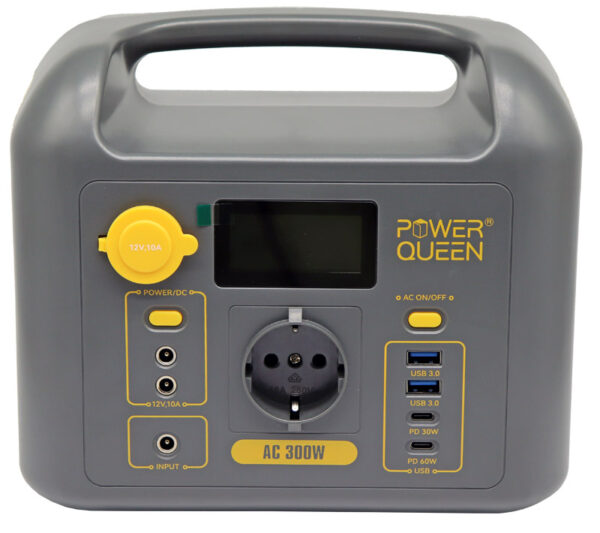
In the middle of the front of the device is an easy-to-read display with the runtime in percent and hours or under an hour in minutes as well as the current input or output performance.
On both sides are the fan grilles for the two integrated FD4020R5M 5 Volt fans with 200mA power from FWDZ, which measure just 40x40x20mm.
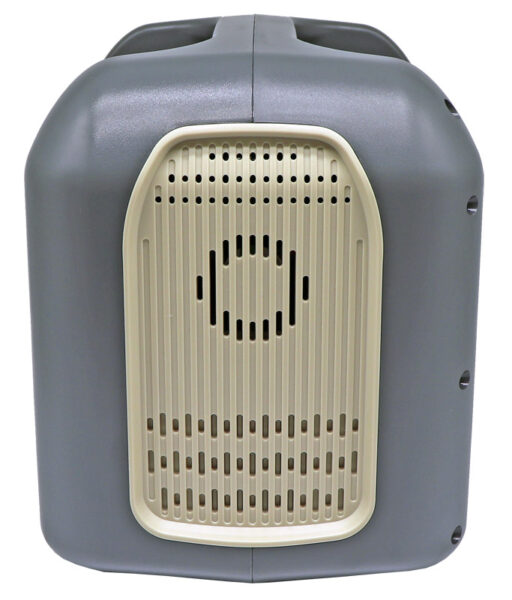
An LED light has been integrated on the back, which can be switched on and off in various modes (bright -> dimmer -> SOS -> flashing -> off) using a button. Before the lighting can be used, however, the power station must be switched on using the front button. There is also a type plate on the back with all the important data and markings such as the CE mark to confirm compliance with all the requirements for operating the product within the EU.
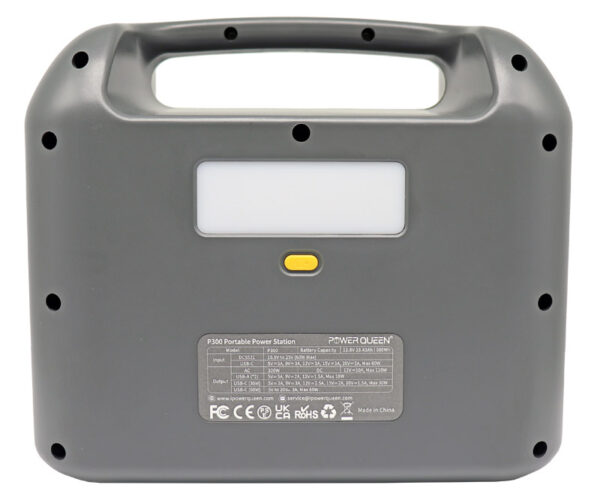
Of course, we also took a look inside the Powerstation to get a better idea of the workmanship and the selected components. In the upper section, the electronics are fitted with an aluminum fan duct and underneath are the LiFePO4 (LFP) battery cells with an output of 23.45Ah at 12.8V, which corresponds to a total capacity of 300Wh. We were certainly impressed by the workmanship. The LiFePO4 or LFP batteries are made of lithium iron phosphate and, in contrast to conventional lithium-ion batteries, are significantly safer and more durable, meaning they can withstand more charging cycles. According to the data sheet, they offer more than 2000 cycles at 100% DOD. DOD means Depth of Discharge, so Power Queen describes the full cycles here. This statement is very important for the cyclical ageing of this power station, as there is no way for the user to set a discharge or charge limit. The battery is therefore always charged almost full and almost empty.
Let’s also take a quick look under the Power Queen Powerstation, where a sign with a support e-mail address has been attached next to the four rubberized feet.
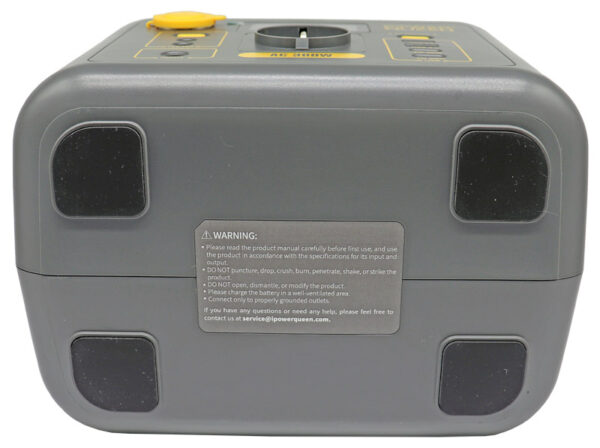
We continue with the Power Queen P300W Powerstation installation …
